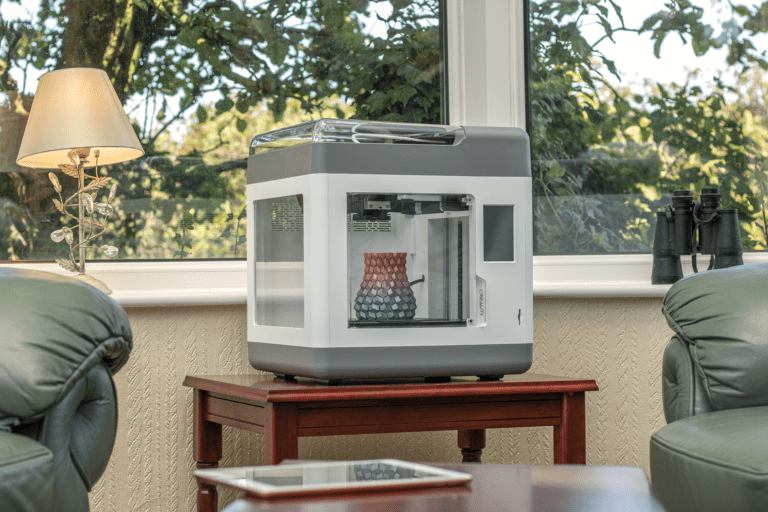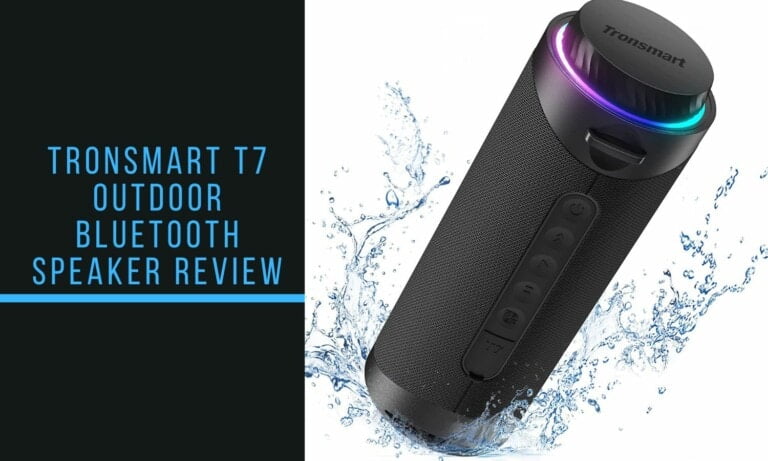Any links to online stores should be assumed to be affiliates. The company or PR agency provides all or most review samples. They have no control over my content, and I provide my honest opinion.
I recently impulsively offered to look after a relative’s 9-month-old puppy for a week as they had an operation that would incapacitate them for a while.
Being the anxiety-riddled person I am, I started to get paranoid about my capacity to look after a puppy and all the things that could go wrong. This included the puppy running off and me losing her.
I then noticed a recommendation in a group that I am in for using Apple AirTags to help track your dog.
They only cost about £30, so it seemed like a reasonable expense to help alleviate some of my worries. But I needed to know how effective they are, and due to the nature of my job, I wanted to know as much about them as possible.
One big question I had was the effectiveness of long-range tracking. I have previously reviewed the Tile Mate Bluetooth tracker, it has the ability to do long-range tracking using the app on other people’s phones, but this seemed like an unreliable way of finding a dog.
So, I decided to compile a list of answers to common questions that people and myself have about Apple AirTags.
| Preview | Product | Rating | Price | |
|---|---|---|---|---|

| Apple AirTag. Track your keys, wallet, luggage, backpack.... |
£28.00 | Buy on Amazon |
What do AirTags do?
AirTags are small, coin-shaped tracking devices created by Apple. They are designed to help you locate and keep track of your personal items. Here’s what AirTags can do:
- Item tracking: You can attach an AirTag to personal belongings such as keys, wallets, bags, or even pet collars. Once attached, the AirTag can be tracked using the Find My app on your iPhone, iPad, or other Apple devices.
- Precision tracking: AirTags use Bluetooth technology and the U1 chip (found in newer iPhones) to provide precise location tracking. When you’re in close proximity to a lost item, the Find My app can guide you to its location with more accuracy.
- Finding lost items: If you misplace an item with an AirTag attached, you can use the Find My app to trigger the AirTag to emit a sound. This sound can help you locate the item if it’s nearby.
- Map location: The Find My app can display the last known location of your AirTag on a map. This can be useful if you’ve left an item behind somewhere and want to retrieve it.
- Siri integration: You can use Siri to help you find items with AirTags. By saying a command like “Hey Siri, where are my keys?” Siri can locate and track the AirTag attached to your keys.
- Privacy and security features: AirTags have built-in privacy features to prevent unauthorized tracking. If an AirTag that doesn’t belong to you is near you for an extended period, your iPhone will notify you. Additionally, the location data associated with AirTags is encrypted and anonymous.
Yes, AirTags can be shared with others. When you set up an AirTag, it becomes associated with your Apple ID. However, you have the option to share the AirTag’s location with other people, allowing them to help you locate the item to which the AirTag is attached. Here’s how you can share AirTags:
- Sharing with Family Sharing: If you have Family Sharing set up, you can share the location of your AirTag with other members of your family. This allows them to see the AirTag’s location in the Find My app on their own devices.
- Sharing with others: You can also share the AirTag’s location with specific people outside of your family. This can be useful, for example, if you want to share the location of an AirTag attached to a shared item like a backpack or equipment with a friend or colleague.
To share an AirTag with others, follow these steps:
- Open the Find My app on your Apple device.
- Select the AirTag you want to share from the list of devices.
- Tap on “Share My Location” or “Add Person” depending on your device and iOS version.
- Enter the contact information of the person you want to share the AirTag’s location with.
- Choose whether you want to allow the person to receive notifications about the AirTag’s movements.
The person you share the AirTag with will receive a notification and, once they accept, they can view the AirTag’s location in their Find My app.
It’s important to note that when you share an AirTag, the other person can only see its location and doesn’t gain ownership or control of the AirTag itself.
Can AirTags be turned off?
Yes, AirTags can be turned off. Turning off an AirTag can be useful in certain situations, such as when you want to conserve its battery or temporarily disable its tracking functionality. Here are a few methods to turn off an AirTag:
- Manual turning off: You can manually turn off an AirTag by removing the battery. AirTags have a replaceable CR2032 coin cell battery, and to turn off the AirTag, simply twist the back cover counterclockwise and remove the battery.
- Out-of-range turning off: AirTags have a built-in mechanism that can automatically enter a low-power mode and stop actively broadcasting their location when they are out of range of their paired Apple device. After a period of inactivity, the AirTag will go into a dormant state to conserve battery life.
- Lost Mode: If you have marked an AirTag as lost in the Find My app, it will enter Lost Mode. In Lost Mode, the AirTag can display a custom message with contact information when it’s tapped by someone with an iPhone or NFC-capable device. However, after a certain period of inactivity, the AirTag will go into a low-power mode and stop actively broadcasting its location.
Do I need an iPhone to use AirTags? & Are AirTags compatible with Android?
Unlike AirPods, which can work with Android (with limited functionality), Apple AirTags can only work with Apple devices.
I don’t personally use Apple products, but my partner does, and she has an iPad at home which I can access. I assumed AirTags were Apple only, but I wasn’t 100% how well they work with things like the iPad.
Both the iPhone and iPad work with AirTags, and you should have the latest iOS or iPadOS version to ensure compatibility.
AirTags are specifically designed to integrate with Apple’s ecosystem and rely on the Find My app, which is pre-installed on iOS and iPadOS devices, to provide tracking functionality.
The Find My app allows you to set up and manage AirTags, track their location, and receive notifications when an AirTag is in proximity. It provides a user-friendly interface to help you locate your personal items to which AirTags are attached.
Does my iPhone need to have UWB for AirTags to work?
No, the AirTags work with Bluetooth primarily.
Ultra Wide Band (UWB) is a low-energy, short-range radio technology that uses super-fast signal pulses (anything up to over a billion a second) broadcast across a wide swathe of the radio spectrum (from 500MHz to several gigahertz). This allows it to avoid the interference issues that plague other technologies, such as Wi-Fi and Bluetooth.
UWB has been used on iPhones since the iPhone 11 thanks to the integrated U1 chip.
UWB has a wide range of uses, but at the moment, the main function has been for high-precision object finding. It is more accurate than things like GPS, and the device you are tracking doesn’t need data connectivity, so it is much lower in power.
It is used to help precisely locate your AirPods as well as the AirTags.
So, you don’t need UWB for the AirTags to work, but it will help you find your AirTag and the thing it is attached to easier.
At the moment, none of the Apple iPads have UWB.
What is the difference between Apple AirTags vs Tile Mate & Tile Pro?
| Preview | Product | Rating | Price | |
|---|---|---|---|---|
   | Apple AirTag. Track your keys, wallet, luggage, backpack.... |
£28.00 | Buy on Amazon | |
  | Tile Pro (2022) Bluetooth Item Finder, 1 Pack, 120m finding... |
£29.99 | Buy on Amazon | |
  | Tile Mate (2022) Bluetooth Item Finder, 1 Pack, 60m finding... | 20,207 Reviews |
£19.98 | Buy on Amazon |
Apple AirTags and Tile are very similar products, and essentially, both do the same thing. They also both crowdsource tracking using the relative app on other people’s phones to find your object.
The Tile Pro has a Bluetooth tracking range of up to 400 ft /120m and 250 ft / 76 meters for the Tile Mate.
Tile does not have UWB because it is not a widely adopted technology for Android.
The main advantage of Tile is that they work with both Android and iOS, and they have four different trackers. The Tile Slim is good for wallet tracking, and the Sticker can be physically attached to any object you want.
The Tile Pro is about the same price as the Apple AirTag, but the Tile Mate is significantly cheaper at around £16.
For Apple AirTags, they have the advantage of ultra-accurate location tracking with UWB. If you are an iPhone user, my opinion is that AirTags will be the best option by far because it integrates with the Find My app on iPhone, and this is on all iPhones. This, therefore, gives the Apple AirTags a significantly larger user base to do remote tracking. For Tile, you are limited to people using the Tile app.
How do AirTags work long distance?


The AirTags themselves only have a relatively short range. It is fine if you have lost your keys in your house, or know roughly where the lost item might be, but not much use if you have lost something in a completely random place.
AirTags have a unique feature called the Find My network that allows them to work beyond their direct Bluetooth range for long-distance tracking. Here’s how it works:
- Find My network: AirTags leverage the vast network of Apple devices, including iPhones, iPads, and Macs, that are actively running the Find My app. These devices can act as anonymous relays to help track and locate lost AirTags.
- Encrypted and anonymous data: When an AirTag is out of Bluetooth range from its paired device, it can use the Find My network to communicate its location securely and anonymously. The location data transmitted through the Find My network is encrypted to protect user privacy.
- Nearby Apple devices: When an AirTag comes into the proximity of an Apple device that is part of the Find My network, such as someone with an iPhone, iPad, or Mac, the device can detect the AirTag’s presence and relay its location to the owner via the Find My app.
- Location updates: As the AirTag moves within range of different Apple devices in the Find My network, its location updates are sent back to the owner. This allows for real-time tracking and helps locate the AirTag even when it’s far beyond the direct Bluetooth range.
The effectiveness of long-distance tracking with AirTags depends on the density of Apple devices in the area and their active use of the Find My app.
Are AirTags worth it for dogs?
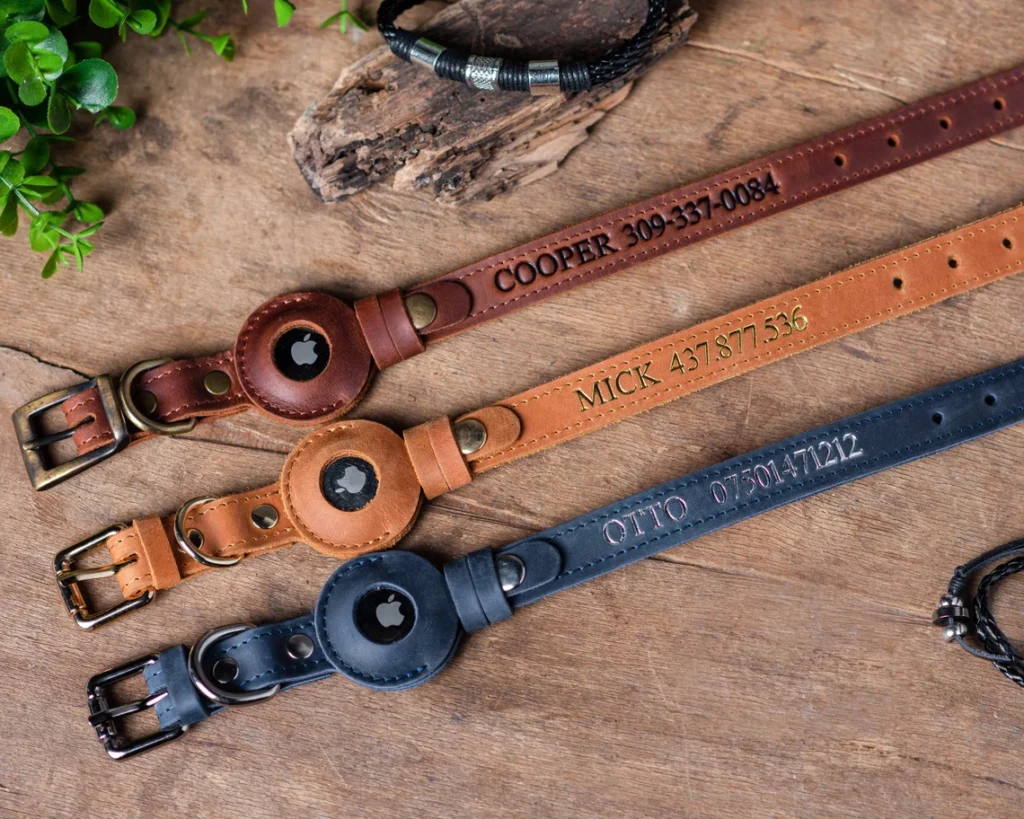

Apple specifically says they do not recommend that AirTags be used for tracking pets or children.
One cause for concern is if the AirTag gets detached from the dog and the dog eats/swallows it. It is small enough that it should pass through OK, but there is a battery inside, and if this is damaged, it can cause serious issues.
That being said, if you attach the AirTag securely with one of the many accessories, it shouldn’t be a problem.
The next issue is if an AirTag is effective enough to track a dog? This will obviously depend on the environment that the dog lives in or where you were walking them when they became lost.
In the middle of the country, they may not be that effective. In the middle of London, you would probably have a good chance of getting periodic updates on their location.
Personally, for the sake of £30 + the accessory to attach it, I think it would be worth it. The dog only needs to be near someone with an iPhone, it might not be the most accurate tracking method, but it will at least give you a rough idea of where they are.
Can I use AirTags to track my child?
This is essentially the same question and answer as above. AirTags are primarily designed and intended for tracking personal items and belongings, not for tracking people, including children.
I would hope a child is less likely to eat an AirTag, so you have fewer concerns there, and I would assume a child is more likely to go missing in a more densely populated area.
There are ethical concerns for this. You should only track someone if they have consented to be tracked.
There are also plenty of dedicated child tracking devices which will offer superior performance for long-range tracking. These use GPS and have data connectivity.
Can I use AirTags to track my luggage when flying?
AirTags can be a useful tool for tracking your luggage when flying. Attaching an AirTag to your luggage can help you keep track of its location and make it easier to identify among other bags. Here’s how you can use AirTags to track your luggage:
- Attach an AirTag: Securely attach an AirTag to your luggage, such as by placing it inside a luggage tag or attaching it to a handle or strap. Make sure it is securely fastened to prevent it from detaching during travel.
- Pair with your device: Set up the AirTag by pairing it with your iPhone, iPad, or iPod touch using the Find My app. Follow the prompts on your device to complete the setup process.
- Enable notifications: In the Find My app, you can enable notifications to receive alerts when your AirTag is in proximity to your paired device. This can help you know when your luggage is nearby, such as when it arrives at the baggage claim area.
- Track location: In the Find My app, you can view the last known location of your AirTag on a map. This can be helpful in tracking the whereabouts of your luggage during your journey.
- Find My network: If your luggage goes out of Bluetooth range, the AirTag can utilize the Find My network, which leverages other Apple devices in the vicinity to help track its location. This can extend the tracking capabilities even when your luggage is not in direct range of your paired device.
Are AirTags allowed in carry-on luggage?
AirTags are generally allowed in carry-on luggage when travelling by air. AirTags do not contain any hazardous materials or restricted items that would prohibit them from being carried on board.
I am not 100% sure on this, but due to the size of the AirTag, you shouldn’t need to remove it from your bag when you go through security, but you will obviously need to remove it from yourself when you go through the scanners. I never remove earbuds when I go through security, it is just the larger electronic items and devices with larger batteries.
Are AirTags allowed in checked luggage?
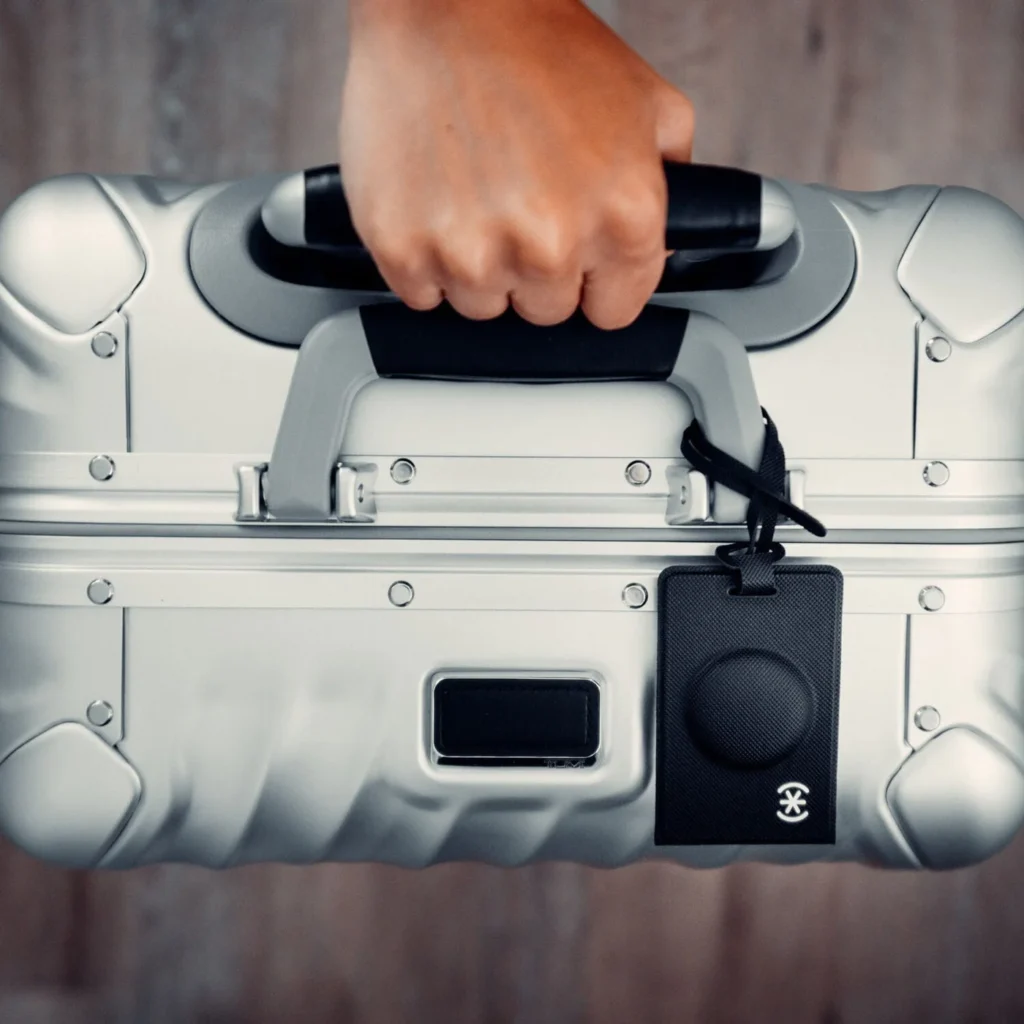

This question has caused some confusion because Lufthansa banned activated AirTags from luggage, which is classified as dangerous and needs to be turned off.
However, in the US, the FAA ruled that you can take an AirTag on a plane. Since an AirTag is powered by lithium metal cells with 0.3 grams or less of lithium within its battery, they are safe to take on an aircraft.
Shortly after the Lufthansa announcement, likely due to the backlash, Lufthansa reversed its decision and now says that Apple AirTags are once again allowed in traveller’s checked luggage. They stated that they consulted with German aviation authorities, who agreed that Bluetooth trackers were safe.
Are AirTags good for cars?
This is much like the above answers. While AirTags can offer some tracking functionality for cars, they may not be the most optimal or comprehensive solution for vehicle tracking and security. You will likely be better off getting a proper GPS tracking system.
And again, it is worth remembering that there are ethical concerns. Don’t try and track someone’s car without their knowledge. And if you do, there is a good chance the other person’s iPhone will warn them about this.
How long does the battery in an AirTag last? & can AirTags be charged?
Apple states that the battery in an AirTag typically lasts for about one year.
AirTags use a replaceable coin cell battery, specifically a CR2032 battery, which is widely available. When the battery of an AirTag is running low, you will receive a notification on your paired Apple device, indicating that it’s time to replace the battery.
Therefore, the AirTags can not be charged, but it’s cheap to replace the battery and you don’t have to do it very often.
Are Apple AirTags waterproof?
While Apple AirTags are not officially designated as waterproof, they do have a certain level of water and dust resistance. The AirTag has an IP67 rating, which means it is protected against dust and can withstand being submerged in up to 1 meter (about 3.3 feet) of water for up to 30 minutes.
This level of water resistance suggests that AirTags should be able to handle accidental exposure to water, such as splashes, spills, or brief submersion.
There are various accessories you can buy to improve the durability and water resistance of the AirTag. You can also do something as simple as putting it inside a waterproof bag/pouch.
What accessories are there for AirTags
One of the big selling points for Apple products is that they inevitably have an incredible range of accessories, both from Apple themselves and third-party companies. A quick search on Amazon will give you hundreds, if not thousands, of options.
Some of the common accessories for AirTags include:
- Key Rings: Key rings specifically designed for AirTags allow you to easily attach them to your keys, bags, or other belongings.
- Luggage Tags: Luggage tags with built-in slots or holders for AirTags make it convenient to attach them securely to your luggage or travel bags.
- Protective Cases: Protective cases for AirTags provide additional durability and protection against scratches, impacts, and water exposure. These cases often feature keychain attachments or adhesive backings for various attachment options.
- Adhesive Mounts: Adhesive mounts allow you to securely attach AirTags to flat surfaces, such as the back of electronic devices, wallets, or other items.
- Pet Collar Holders: Some accessories are designed specifically for attaching AirTags to pet collars, ensuring a secure and comfortable fit for tracking your pets.
- Loop Attachments: Loop attachments offer a flexible and secure way to attach AirTags to various objects, such as backpacks, luggage handles, or zipper pulls.
Are AirTags worth it?
There is no objective answer to this question. If you are an iPhone user and feel the need to track an object, then the AirTags are the best option for this assuming you are aware of the limitations of long range tracking.
Are AirTags safe?
AirTags are designed with safety and privacy in mind, but it’s important to understand and consider certain aspects to ensure their safe and responsible use:
- Privacy features: AirTags incorporate privacy features to protect users. They use rotating Bluetooth identifiers to help prevent unauthorized tracking and provide alerts on nearby AirTags that are not paired with the user’s device. These measures are intended to maintain privacy and mitigate potential concerns.
- Find My network alerts: If an AirTag is separated from its owner for an extended period, it can emit an audible alert. This feature helps prevent someone from unknowingly carrying an AirTag without the owner’s knowledge.
- Safety concerns for third-party use: AirTags are primarily intended for tracking personal items and belongings. It’s important to use them responsibly and within legal and ethical boundaries. Using AirTags to track individuals without their knowledge or consent is against Apple’s policies and can infringe on privacy rights.
- Child safety: Apple provides guidance on child safety and the use of AirTags. It’s important to prioritize open communication, consent, and respect for privacy when considering tracking devices for children.
- Reporting lost AirTags: If you find an AirTag that doesn’t belong to you, you can use your device’s NFC capabilities to scan the AirTag and access the owner’s contact information. This allows you to notify the owner and return the AirTag to them.
Are AirTags magnetic?
Not really. The removable cover uses magnets to securely hold it in place, but these magnets are not intended for any specific function other than keeping the cover attached to the AirTag itself.
There are plenty of accessories you can buy that will mount the AirTag and allow you to attach them to things. This includes a variety of magnetic accessories.
Originally posted on Mighty Gadget
I am James, a UK-based tech enthusiast and the Editor and Owner of Mighty Gadget, which I’ve proudly run since 2007. Passionate about all things technology, my expertise spans from computers and networking to mobile, wearables, and smart home devices.
As a fitness fanatic who loves running and cycling, I also have a keen interest in fitness-related technology, and I take every opportunity to cover this niche on my blog. My diverse interests allow me to bring a unique perspective to tech blogging, merging lifestyle, fitness, and the latest tech trends.
In my academic pursuits, I earned a BSc in Information Systems Design from UCLAN, before advancing my learning with a Master’s Degree in Computing. This advanced study also included Cisco CCNA accreditation, further demonstrating my commitment to understanding and staying ahead of the technology curve.
I’m proud to share that Vuelio has consistently ranked Mighty Gadget as one of the top technology blogs in the UK. With my dedication to technology and drive to share my insights, I aim to continue providing my readers with engaging and informative content.
Last update on 2024-04-18 / Affiliate links / Images from Amazon Product Advertising API

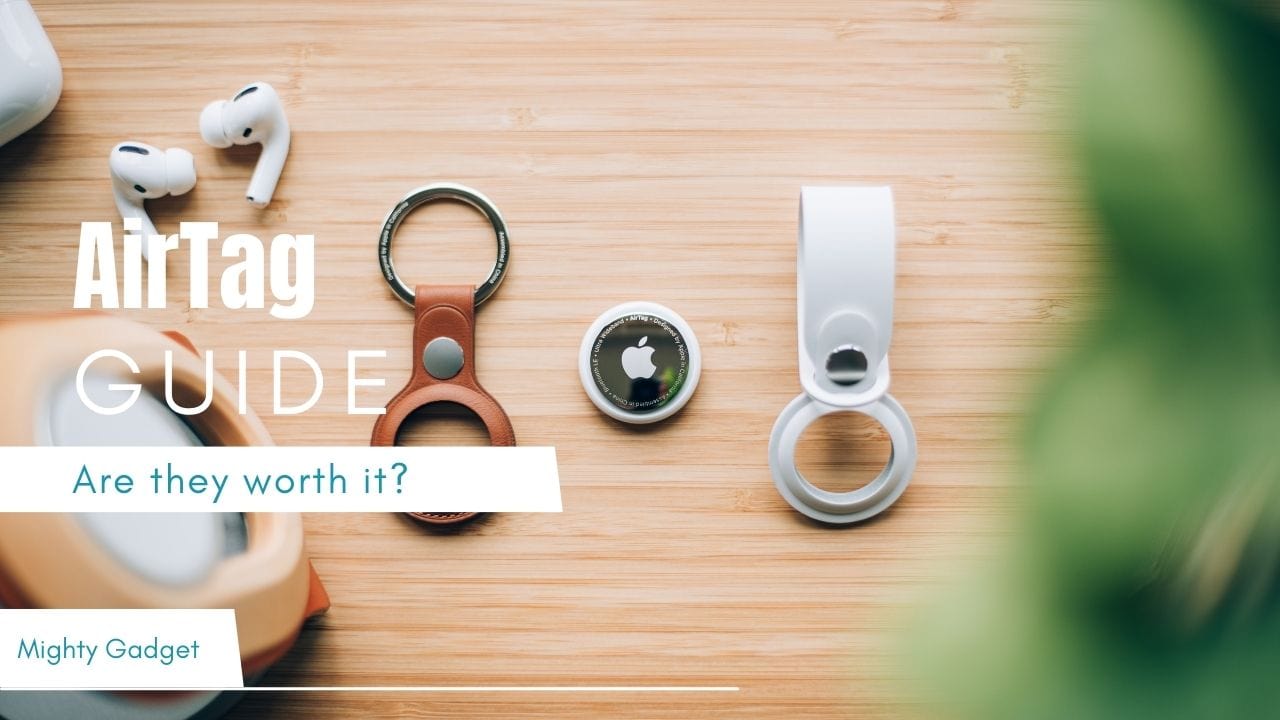
![Aukey Basix Pro PD Wireless Power Bank Charger Review [PB-WL02]](https://mightygadget.com/wp-content/uploads/2023/03/Aukey-Basix-Pro-PD-Wireless-Power-Bank-Charger-Review-Mighty-Gadget-768x578.jpg)
